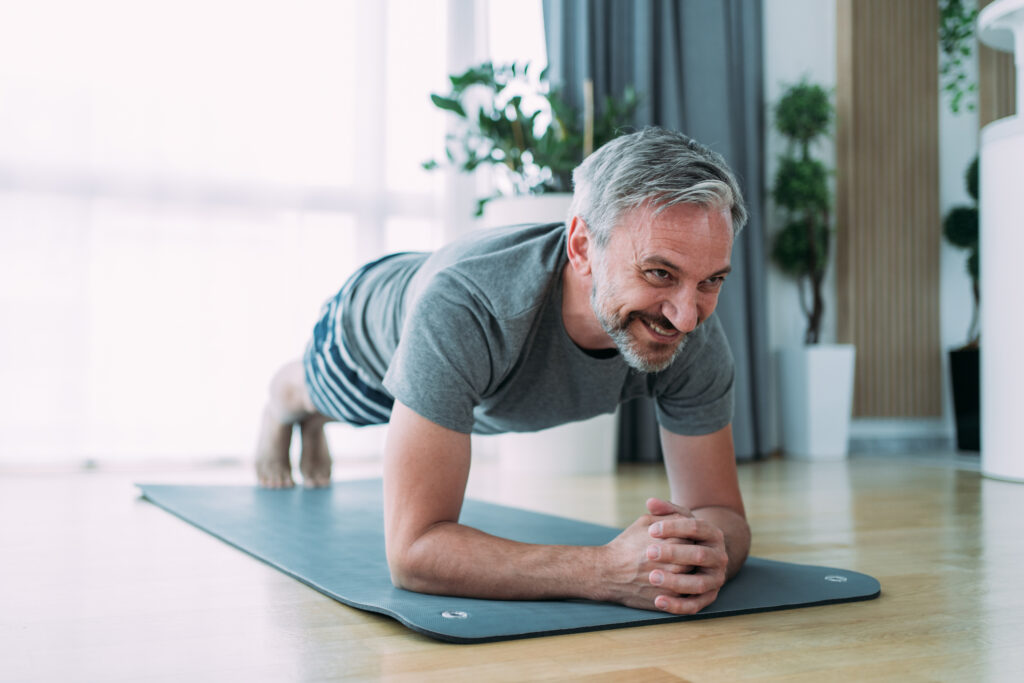Ten Bone and Joint Health Resolutions for 2024
December 1st, 2023

Many of us pledge to take steps to improve our health in the new year. This might be a great one to focus on bone and joint health problems, which are among the most prevalent and debilitating health challenges Americans face. To get you started, check out these ten great resolutions from the American Academy of Orthopaedic Surgeons (AAOS):
- Always cut away from yourself in the kitchen. One slip of the knife can cause a terrible injury. When cutting fruits and vegetables (and especially avocados!), be sure to cut away from your body and keep your free hand away from the blade. Keep your knife handles dry, your cutting surface secure, and your cutting area well-lit.
- Warm up before sporting activities. A good warmup prepares your body for more intense activity by getting your blood flowing, raising muscle temperature, and increasing your breathing rate. Warming up gives your body time to adjust to the demands of exercise. This can improve your performance and help you get the results you want. How long you warm up depends on your fitness level, but if you are new to exercise, your body will respond better with a longer warmup.
- Check your vitamin D levels and start supplementation if warranted. Vitamin D is necessary for strong bones and muscles. Without vitamin D, our bodies cannot effectively absorb calcium, which is essential to good bone health. Research supports that the body needs at least 1000 IU per day from diet and/or sunlight for good health. A simple blood test can reveal your vitamin D level.
- Keep your bones strong with weight-bearing activities. Everyone needs lifelong weight-bearing exercise to build and maintain healthy bones. Consider any of the following weight-bearing activities each day: brisk walking, jogging and hiking; yard work such as pushing a lawnmower and heavy gardening; team sports such as soccer, baseball and basketball; dancing, step aerobics and climbing; tennis and other racquet sports; skiing, skating, karate and bowling; weight training with free weights or machine.
- Stay off ladders. They are dangerous! If you must use one to reach something on the top shelf of the pantry, to wash windows or clean the gutters, follow AAOS ladder safety guidelines: inspect the ladder for any loose screws, hinges or rungs; never place a ladder on the ground or flooring that is uneven; make sure the soles of your shoes are clean so they don’t slip off the ladder rung; never stand on the top rung of any ladder; and always grip the rails of the ladder while climbing.
- Be aware of the loads you carry and how you carry them. If possible, lighten the load you carry each day, because the larger and heavier your backpack, luggage or purse, the greater your risk of neck, back and shoulder injuries. When lifting a large item, stand alongside it and bend at the knees. Try to limit bending at the waist. Lift luggage with your leg muscles and don’t twist when lifting or carrying. Point your toes in the direction you are headed and turn your entire body in that direction. If you are carrying a backpack, use both straps to help distribute the weight.
- Protect your joints and learn how they can last a lifetime. Thirty minutes of physical activity a day can help individuals feel good and prevent certain medical conditions, so get up, get out, and get moving! Exercise helps keep the joints flexible, the muscles around the joints strong, bone and cartilage tissues healthy, and reduces pain and stiffness. If you do have joint pain or arthritis, find an orthopedic surgeon in your area and discuss your options on how best to preserve your joint.
- Eliminate hazards in your home and the homes of your older relatives that might cause a fall. Falls are the leading cause of both fatal and nonfatal injuries among older adults and each year, more than 2.3 million Americans are treated in emergency rooms for fall-related injuries. Research shows that simple safety modifications at home, where most falls occur, can substantially cut the risk of falls and related injuries. Fall-proof your home by placing a slip-resistant rug or rubber mat adjacent to the bathtub for safe entry and exit, and by installing handrails on both sides of the stairway. Other fall prevention tips are available on the AAOS consumer website, www.orthoinfo.org.
- Decide to Drive: keep your eyes on the road and hands on the wheel. Every day, orthopedic surgeons see the horrible consequences of people who choose to drive while distracted. So, each time you get behind the wheel, make a conscious decision to “Decide to Drive.” Prepare to drive before you start your car—adjust all controls, mirrors, maps, navigation systems, etc., while still in park. If a distraction comes up while you are driving, pull over and manage it. But most importantly, keep your eyes on the road and hands on the wheel every time you drive. (For more information, visit the AAOS www.decidetodrive.org website.)
- Take an active part in your own healthcare and be an informed patient. Better healthcare happens when patients and physicians work together as a team. It’s all about communicating. So remember to write down your questions before your appointment. And insist on fully understanding all treatment options discussed, so together you can make the best decisions. Don’t ever hesitate to ask questions, voice concerns or speak up when you don’t understand. Always be honest and answer questions completely; share your point of view and don’t hold back information. Read more patient-physician communication tips on the www.orthoinfo.org website.
Source: The American Academy of Orthopaedic Surgeons (www.aaos.org)
Categories:
Blog Post

